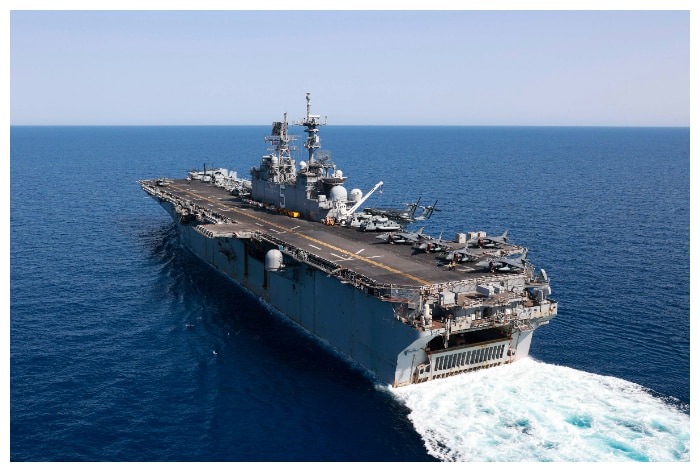A similar warning went out to shippers earlier this year ahead of Iran seizing two tankers traveling near the strait, the narrow mouth of the Persian Gulf through which 20% of the world’s oil passes.

DUBAI, United Arab Emirates: Western-backed maritime forces in the Middle East on Saturday warned shippers traveling through the strategic Strait of Hormuz to stay as far away from Iranian territorial waters as possible to avoid being seized, a stark advisory amid heightened tensions between Iran and the U.S.
A similar warning went out to shippers earlier this year ahead of Iran seizing two tankers traveling near the strait, the narrow mouth of the Persian Gulf through which 20% of the world’s oil passes.
While Iran and the U.S. now near an apparent deal that would see billions of Iranian assets held in South Korea unfrozen in exchange for the release of five Iranian-Americans detained in Tehran, the warning shows that the tensions remain high at sea. Already, the U.S. is exploring plans to put armed troops on commercial ships in the strait to deter Iran amid a buildup of troops, ships and aircraft in the region.
U.S. Navy Cmdr. Timothy Hawkins, a spokesman for the Mideast-based 5th Fleet, acknowledged the warning had been given, but declined to discuss specifics about it.
A U.S.-backed maritime group called the International Maritime Security Construct “is notifying regional mariners of appropriate precautions to minimize the risk of seizure based on current regional tensions, which we seek to de-escalate,” Hawkins said. “Vessels are being advised to transit as far away from Iranian territorial waters as possible.”
Separately, a European Union-led maritime organization watching shipping in the strait has “warned of a possibility of an attack on a merchant vessel of unknown flag in the Strait of Hormuz in the next 12 to 72 hours,” said private intelligence firm Ambrey.
“Previously, after a similar warning was issued, a merchant vessel was seized by Iranian authorities under a false pretext,” the firm warned.
The EU-led mission, called the European Maritime Awareness in the Strait of Hormuz, did not immediately respond to a request for comment.
Iran through its state media did not acknowledge any new plans to interdict vessels in the strait. Iran’s mission to the United Nations did not immediately respond to a request for comment.
The Strait of Hormuz is in the territorial waters of Iran and Oman, which at its narrowest point is just 33 kilometers (21 miles) wide. The width of the shipping lane in either direction is only 3 kilometers (2 miles). Anything affecting it ripples through global energy markets, potentially raising the price of crude oil. That then trickles down to consumers through what they pay for gasoline and other oil products.
There has been a wave of attacks on ships attributed to Iran since 2019, following the Trump administration unilaterally withdrawing America from the 2015 Iran nuclear deal and re-imposing crushing sanctions on Tehran.
Those assaults resumed in late April, when Iran seized a ship carrying oil for Chevron Corp. and another tanker called the Niovi in May.
The taking of the two tankers in under a week comes as the Marshall Island-flagged Suez Rajan sits off Houston, likely waiting to offload sanctioned Iranian oil apparently seized by the U.S.
Those seizures led the U.S. military to launch a major deployment in the region, including thousands of Marines and sailors on both the amphibious assault ship USS Bataan and the USS Carter Hall, a landing ship. Images released by the Navy showed the Bataan and Carter Hall in the Red Sea on Tuesday.

Don’t Miss Out on the Latest Updates.
Subscribe to Our Newsletter Today!

